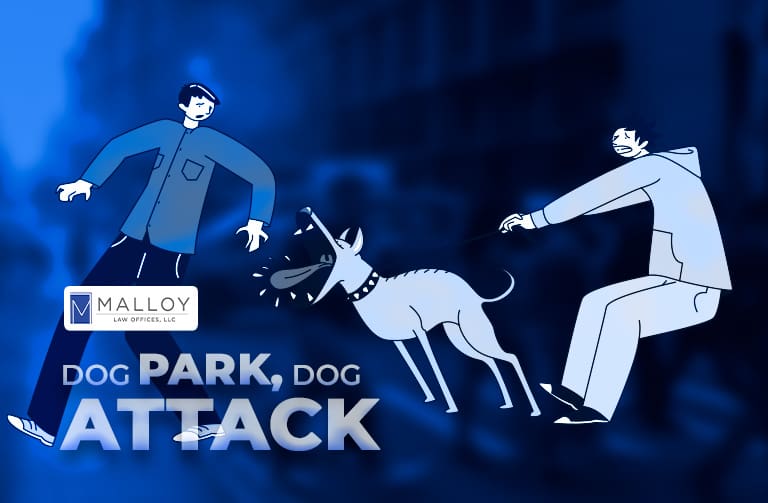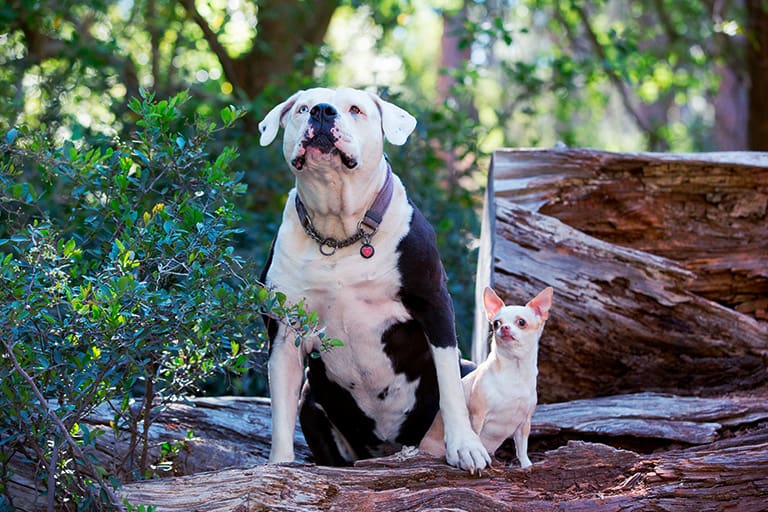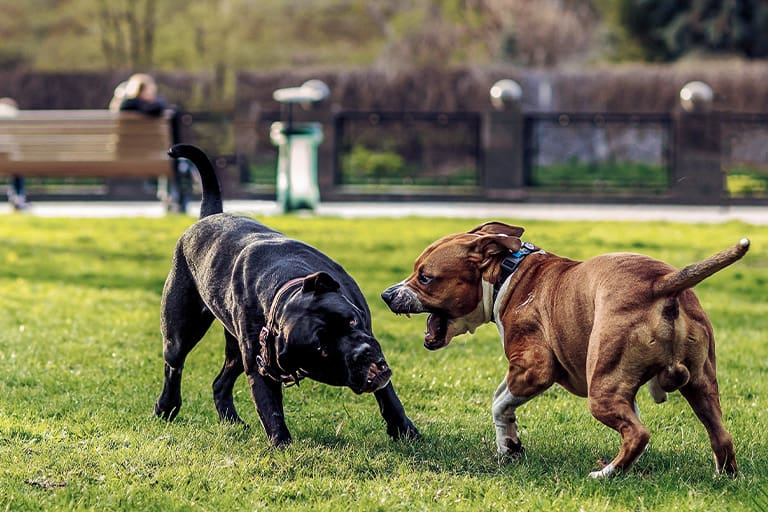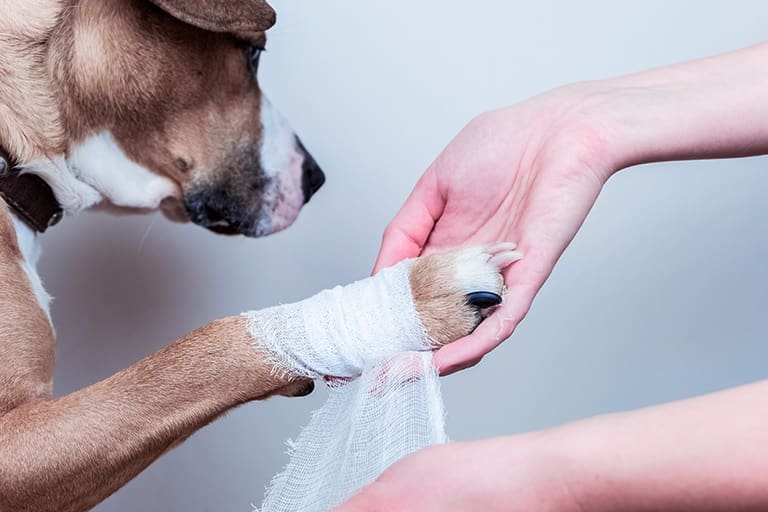What to Know in the Event of a Dog Park Dog Attack
Dog parks are an increasingly common feature of our urban recreation infrastructure. Even existing public dog parks have seen a dramatic rise in their usage rates since the COVID-19 pandemic. Ideally, dog parks are a great venue for both pets and people to meet new friends and socialize casually in an outdoor setting. However, the unsupervised nature of these interactions means that untrained or aggressive dogs may become overstimulated and inflict serious injuries on you or your dog. Today’s Malloy Law blog will examine your options in the event of a dog park dog attack. We’ll also examine how a recent viral incident in New York City has placed the issue of dog on dog violence under a microscope. Read on for the full story.
The Story of Penny the Chihuahua
At beginning of May 2025, a disturbing viral video showed a 10 year old Chihuahua named Penny being attacked on the street in New York City by a pair of pit bulls. Penny survived the attack, but their owner found themselves on the hook for $11,000 in medical bills for emergency intervention. The visceral reaction to the video has driven a public outcry and demand for more stringent penalties for negligent dog owners. The New York state assembly is in the process of considering the so-called “Penny’s Law,” a new piece of legislation which would hold negligent dog owners in the state criminally accountable for the damage done by their pets.
Dog Park Dog Attack Laws in Your Backyard
We’re hopeful that that debate around Penny’s Law and the increased awareness of these unfortunate incidents will lead to a more humane environment for pet owners and increased awareness of the need for dog training and responsible handling. However, we’re also expecting an increased interest in laws governing these interactions in our region. Let’s discuss and examine them below.
Maryland
While there is no statewide provision prescribing special conditions to certain breeds of dog, especially pit bulls, Maryland counties may still impose certain conditions on what breeds they deem dangerous. Check with your local municipal government for the full story.
Maryland has no “one bit law” and approaches all dog bite cases from a standpoint of strict liability. Per the People’s Law Library of Maryland: “If your dog injures or kills someone, the law presumes that you knew, or should have known, that your dog was dangerous.” The dog owner may present evidence to refute this claim in court.
Furthermore, the People’s Law Library States:
In addition to a civil case, you may also face criminal charges, namely criminal misdemeanor, and a fine of up to $2,500 if your dog injured someone, and the dog is considered dangerous.
A dog is dangerous if the dog:
-
without provocation, has killed or inflicted severe injury on a person
-
is deemed to be dangerous by an appropriate unit of a county or municipal corporation and after the determination is made:
-
bites a person;
-
kills or severely injures another domestic animal on another person’s property; OR
-
attacks without provocation.
-
Virginia
According to Virginia’s “One Bite Law,” a dog owner is not liable for the medical expenses of the victim the first time their dog bites or injures someone else. The reasoning behind this is that a dog owner who was unaware of their pet’s aggressive conduct beforehand shouldn’t be held accountable for actions they were unable to prevent.
Virginia also has special provisions for “dangerous dogs” as determined by a court hearing.
A dog can be classified as dangerous if a court determines that it:
- killed or seriously injured a pet dog or cat, or
- directly caused serious injury to a person.
Owners can be ordered to pay back the government for any money spent caring for a dangerous dog before the hearing. They can also be ordered to pay restitution to the victim of an attack.
Dangerous dogs are also subject to rules about how and where they’re kept, including that:
- the dog must be either indoors or in a secure enclosure when it’s on the owner’s property
- the dog must be muzzled and leashed when it’s off the owner’s property
- there must be signs at the entrances to the property warning of a dangerous dog, and
- the owner must inform the authorities if they sell the dog or move with it to a new address.
DC
Washington DC also has a version of the “one bite rule” on the books as well as a similar system of registration and classification for problem dogs. DC classifies these dogs under two tiers, “potentially dangerous” and “dangerous.” These are as follows:
Potentially Dangerous Dog
A dog is deemed potentially dangerous if guilty of any of the following:
- Chases or menaces a person or domestic animal in an aggressive manner without provocation, causing an injury to a person or domestic animal that is less severe than a serious injury
- In a menacing manner, approaches without provocation any person or domestic animal as if to attack, or has demonstrated a propensity to attack without provocation or otherwise endanger the safety of human beings or domestic animals
- Is running at large and has been impounded by an animal control agency three or more times in the district within any 12-month period
The owner of the dog is responsible for any fees associated with the dog’s care while in the authorities’ custody.
Dangerous Dog
There are increased responsibilities for the owner of a dangerous dog compared to a potentially dangerous dog. A dog is classified as dangerous for either of the following:
- Causes a serious injury to a person or domestic animal
- Engages in repeated instances of the behavior that determined them to be a potentially dangerous dog
Dogs working with law enforcement can’t be classified as potentially dangerous dogs or dangerous dogs.
How Malloy Law Can Help
Malloy Law can assist if a dog park dog attack has wounded you or your pet. Our legal team can boast some of the region’s dog bite specialists. Whether you live in Maryland, Virginia, or Washington, DC, we are prepared to evaluate your case at no cost, take into account your particular situation, and devise a strategy to obtain damages for your pain and suffering, lost income, and medical expenses. Contact Malloy Law today and let’s win your case.





